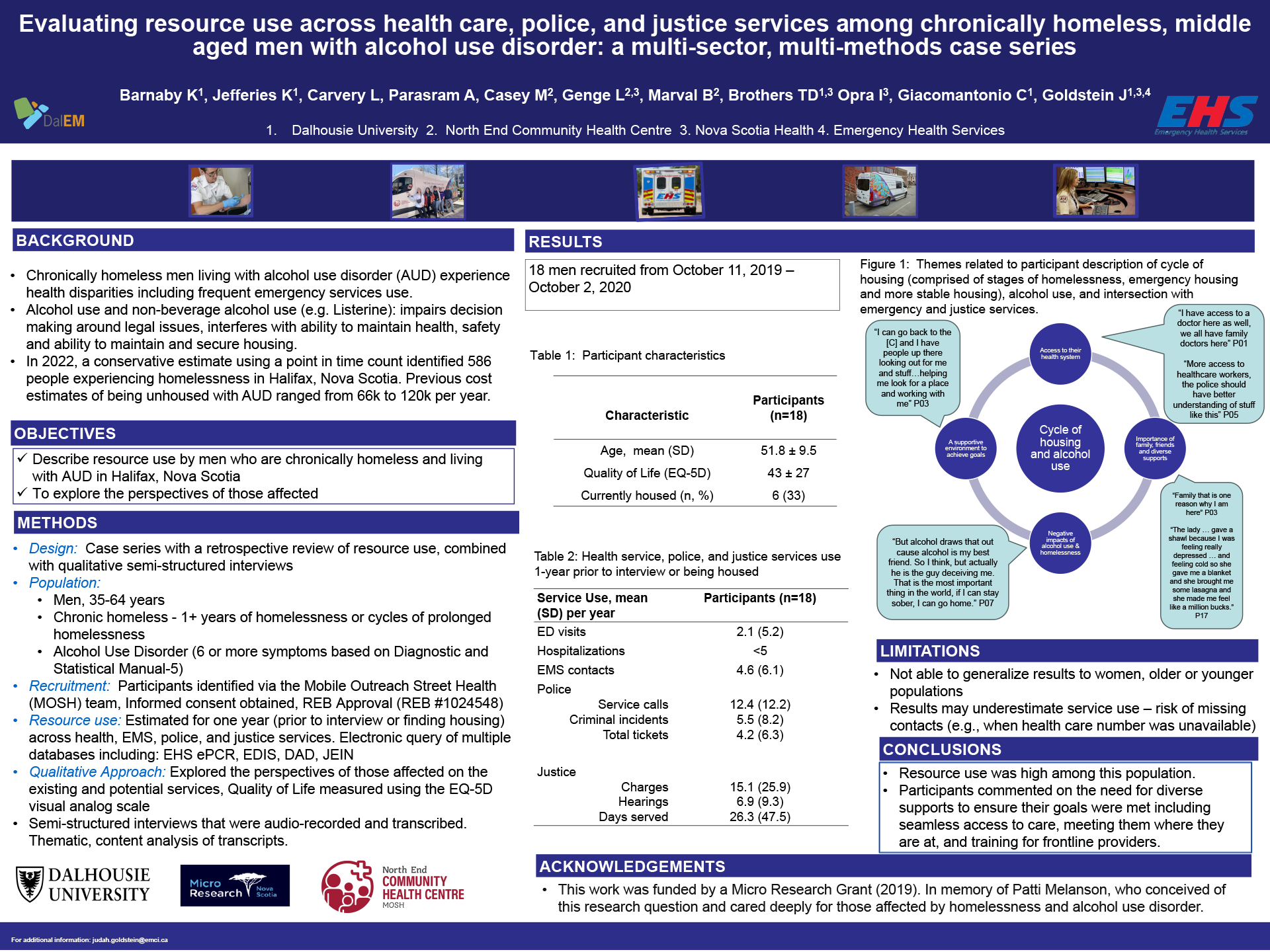|
Evaluating resource use across health care and police services among chronically homeless, middle aged men with alcohol use disorder: a multi-sector, multi-methods case series
Background: Chronically homeless men living with alcohol use disorder (AUD) experience health disparities and frequent emergency services use. Our objectives were 1) to describe health care and police services use by this population and 2) to explore their perspectives on services relevant to them.
Methods: We conducted a multi-methods case series, using quantitative administrative data and qualitative interview data. We recruited a convenience sample of currently or recently homeless men aged 35-64 years with AUD, between October 11, 2019 and October 2, 2020. Quantitative data were collected for one year prior to enrollment (for those currently unhoused) or one year prior to accessing housing. Grounded theory with constant comparative and thematic analysis was used to understand the participants’ perspectives of their lived experiences.
Results: Participants were 18 men with a mean age of 51.8±9.5 years (range 35-64 years). They reported a mean quality of life of 43±27 on the European Quality of Life 5 D scale. Resource use varied among the 18 participants with a mean of 28.8 ± 26.3 EMS and police contacts (range 0-96). EMS incidents (mean EMS incidents 4.6 ± 6.1) comprised 16% (n=83) of total contacts (n=519). Participants described a cycle of housing (comprised of stages of homelessness, emergency housing, and more stable housing) often related to their complex relationship with alcohol. Being housed was a commonality among participants when discussing what was going well in their life. They described “their health system” that included access to emergency, primary and mental health care. The importance of family, friends, and diverse supports was evident. Finally, they expressed the need to have a supportive environment to achieve their goals.
Conclusion: Resource use was high among this population and men with AUD who experienced homelessness identified opportunities to improve service delivery and efficiency.
|



